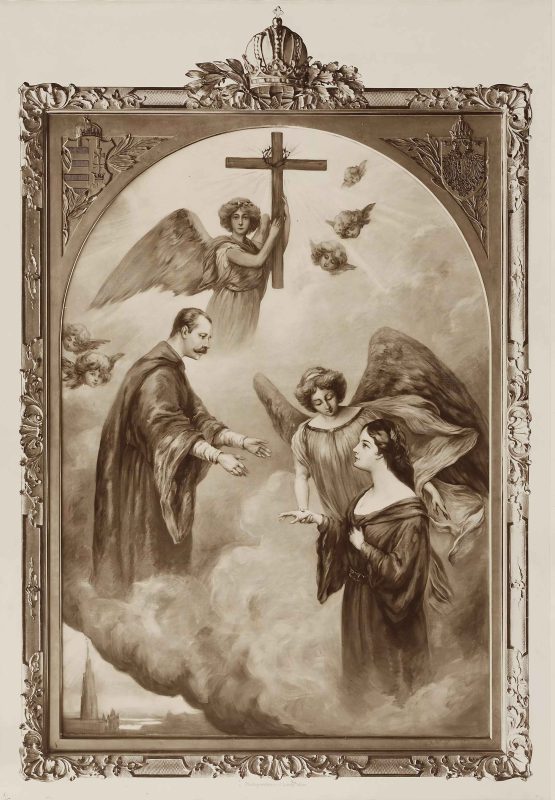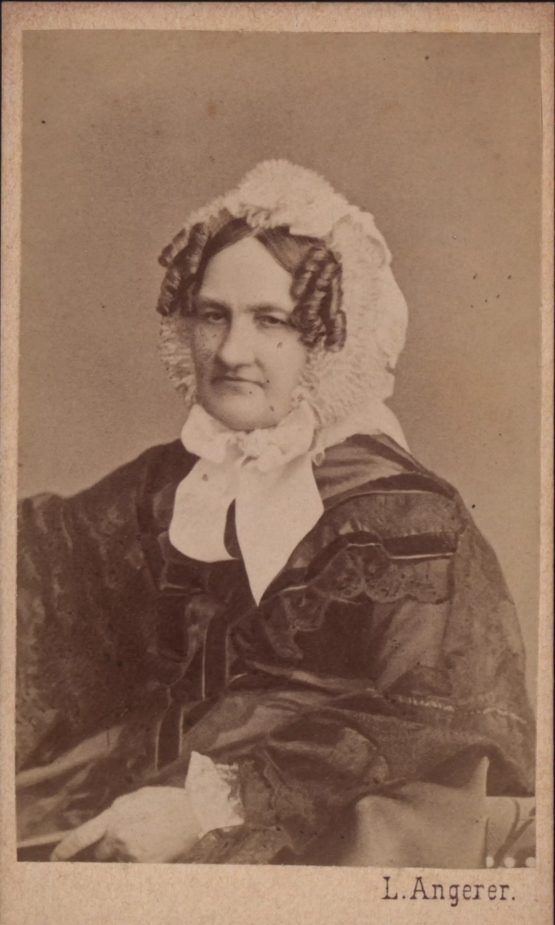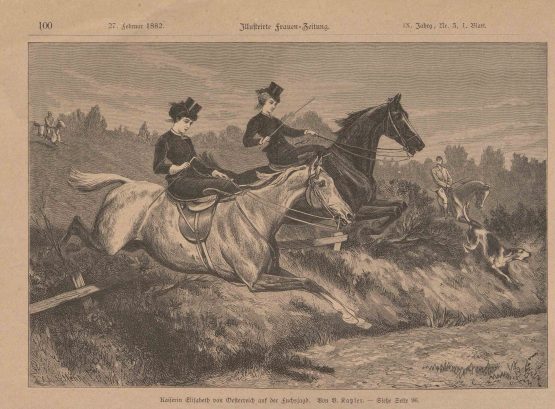Sisi's places of longing and passions
Places of Longing and Passions: A Habsburg Woman's Life in the 19th Century
On the distant horizon I see
A white sail gliding;
I want to go with you!
I see on a foaming wave steed
The seagull riding merrily;
I want to go with you!
I see the fisherman, ready for sea
Lifting the heavy anchor;
I'd like to go with him!
But my own wish'd keel
Finally where to point! -
I know not!
(from "Widmung" a poem from the North Sea Cycle of Empress Elisabeth of Austria. In: Sisi. Letters and poems from her estate. Salzburg, Wiesbaden 2015)
Empress Elisabeth's love of travel is almost legendary: even the Sissi trilogy with Romy Schneider shows an empress drawn to magnificent spas or even to wild Hungary. In numerous poems like this one, Elisabeth got her inner restlessness off her chest, which took her both to remote paradises and to numerous nearby imperial and royal places of longing.
Constantly driven by the inner urge to escape the rigid courtly corset, Sisi visited beautiful places, but to drop anchor with her longings? Unfortunately, she did not succeed in doing so. She possessed numerous talents, but as a woman of her time she was never able to deepen them in such a way that they would have given her satisfaction.
On our journey along the Danube, we would like to visit places in the Monarchy that both Elisabeth and other Habsburg women visited to indulge their passions. In the process, we will repeatedly come across places where mementos from the lives of the Habsburg women are on display. We always keep the following questions in mind: What was a noblewoman allowed to do to pass the time in the 19th century, what was considered decent, and where did one come up against the limits of etiquette? Sufficient money as well as free time were the prerequisites for such a lifestyle, but even then there were by no means the opportunities for free development that we know and appreciate as women today.
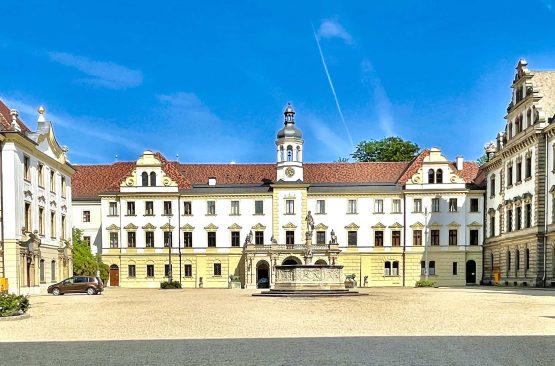
Let's start our journey in the eastern part of Bavaria, in Regensburg. St. Emmeram Castle the life of Sisi's favorite sister Helene von Thurn und Taxis, born Duchess in Bavaria, came to an end on May 16, 1890.
It was Helene who visited Elisabeth when she went to Corfu for a cure in the 1860s and was probably the greatest help to her in her recovery. She supported the younger sister extremely energetically: the two went on excursions together, Helene encouraged the little sister to eat and was simply always there for her. At that time, Elisabeth was still escaping from the Viennese court under the guise of spa visits - that family dungeon that offered her no support and was teeming with whispering courtiers who stood behind every palace corner. As a noblewoman, her personal circle was extremely limited, and she was subject to constant surveillance. How could one develop so freely? What could be better than a stay among servants who were only there for her well-being, along with a sister who took care of her worries and needs?
Shortly before Helene's death at St. Emmeram's Palace, the two sisters, who were very fond of each other, talked about how they had both survived severe blows of fate, but always had a good heart. Of course in English, so that even these last words could not be picked up by the staff - English was not very common at that time and was considered a secret language of Sisi and Helene. The two remained on guard until the very end!
Helene 's death chamber in St. Emmeram can still be visited today: This was converted into a palace chapel by her son, Prince Albert I, in memory of his mother Helene. A beautiful historical jewel that tells of the sisters' shared suffering.
Born more than a century later, Princess Gloria von Thurn und Taxis still enlivens St. Emmeram Palace, once inhabited by Helene, with her wealth of ideas: the Palace Festival and a Christmas market are held there every year on her initiative; in addition, the museum use of the Princely Treasury can be attributed to her. In contrast to the aristocratic ladies of the 19th century, the Countess of Schönburg-Glauchau, who was born in St. Emmeram, was able to develop her personal life in a completely different way, which she did, especially in her younger years: after marrying Johannes von Thurn und Taxis in St. Emmeram at the age of 20, for whom she gave up her dream of an acting career, she gave birth to three children and thus fulfilled everything that was expected of her dynastically, but did not really settle down through marriage and childbearing. When her much older husband traveled around the world at the age of 60, leaving his wife and children behind in the castle, Gloria became a punk princess: she wore weird hairstyles and equally daring dresses, partied with greats like Michael Jackson, Prince and Mick Jagger. A thoroughly dissolute and scandalous life! Would Sisi and Co. have been able to live like this in the 19th century? Hardly!
You can pay homage to the empress herself in the House of Pope Benedict XVI - New Treasury and Pilgrimage Museum of the Diocese of Passau (https://www.bistum-passau.de): Elisabeth's magnificent bridal wreath is on display there. What was Elizabeth's attitude towards the church; was it a kind of anchor point for her, something to which she could return in stormy times? Religion as Elisabeth's passion?
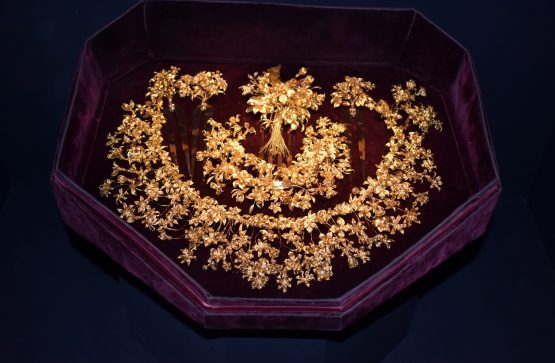
Alfons Schweiggert describes Sisi's attitude to God as a patchwork religiosity: she rejected everything dogmatic, but loved religious celebrations such as communion, confirmation and weddings all the more. She could not and did not want to live without religion, but she created it out of a mixture that was all her own. She paid homage to deceased persons, such as the poet Heinrich Heine, and assumed that God created the world, but from then on had no influence on nature and history. As was so often the case in Elisabeth's life, her attitude towards religion was thus also marked by contradictions. She was by no means a simple churchgoer who allowed herself to be led by the spiritual authorities and did not give the subject any thought of her own. It is therefore not surprising that she offended the strict Catholic archbishopric!
So, as we know, Sisi loved to travel for a living. So it is only fitting that Austria's most important railroad line, namely the Westbahn, was built in 1860 by the imperial and royal privileged Empress Elisabeth Railway . The main line once ran from Salzburg via Linz in Upper Austria to the capital Vienna. In 1873, the empress was provided with her own set of coaches, consisting of a saloon and sleeping car, complete with electric lighting, heating and toilets. Only the best for the Empress of Austria!
The replica of the carriage can still be seen today in the Sisi Museum of the Vienna Hofburg can still be viewed today. This exceedingly luxurious way of traveling sometimes makes one quite envious, even if the restlessness of the driven empress certainly did not always ensure an exuberant travel mood.
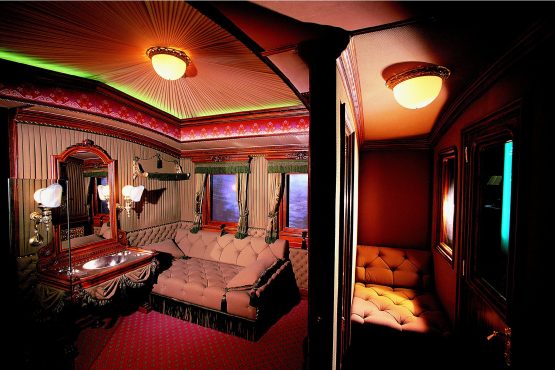
As is well known, Lower Austria is located between Linz and Vienna, a region that is home to the impressive Wachau Valley and numerous castles, palaces and monasteries. The variety of historic splendorous buildings is so great that a single vacation is not enough to visit them. A highlight is the in the district of Melk located Artstetten Castle. It served as the widow's residence of the ex-emperor Karoline Auguste, wife of the late Franz II/I.
Karoline Auguste not only devotedly cared for her aging and ailing husband, but also - and this has been unjustly forgotten! - for the poor people of the nation. In particular, she promoted the so-called infant care centers . Her tireless efforts led to a rapid increase in the number of kindergarten precursors. Most of the money that Karoline Auguste donated flowed into the institutions from her private fortune. This clearly demonstrates the empress's passion for charity and her desire to do something good for the people. She gave meaning to her life in a way that was appropriate for ladies of her rank. Through her charitable personal commitment to the poor and sick, a noblewoman fulfilled her duty to the ruler, but at the same time showed her Christian goodness. A win-win situation for all involved!
Located not far from Schönbrunn Palace in the Lainzer Tiergarten is the Hermes Villa a place of longing designed by Emperor Franz Joseph for his wife, which Elisabeth was equally ambivalent about. The expansive interior without its own toilet and with baroque-looking furniture did not appeal to her at all, so she redesigned the villa for her own purposes without further ado. In the Lainzer Tiergarten, she, the restless one, undertook the endless walks she so appreciated, and swam in the Hohenauer Pond near the villa. Elisabeth needed physical exercise like the air she breathed to get the imperial stress off her chest, but of course also - quite modernly - to maintain her wasp waist.
When we talk today about physical activity being helpful for depression and anxiety disorders, since excess adrenaline is reduced and the happiness hormone serotonin is promoted, this is nothing new: Even Elisabeth, the woman who was eternally mewled at court and considered an oddball, knew as early as the 19th century that brisk walking, horseback riding, apparatus gymnastics and even swimming were good for her. Her restlessness thus found an outlet, without which she would probably have threatened to suffocate. Elisabeth's constant activity can be interpreted as running away from social and especially imperial constraints.
Of course, here too she was always bound by the limits of courtly - and especially mother-in-law - acceptance: Sisi was not allowed to go horseback riding during her pregnancies so as not to endanger a possible heir to the throne, and she had to seek out secluded coves for swimming so as not to expose the imperial body to onlookers. There were paparazzi even then, although not to the same extent as today. But even in the 19th century, everything one did in public could have image consequences. A tightrope act for Elisabeth!
What Elisabeth had in common with other Habsburg women was her tireless love of spas: one after the other, she visited the most expensive and most beautiful spas in the imperial and royal monarchy. Where exactly Sisi and Co. took the cure in Austria, but also in Slovakia and Hungary, and indulged in various other passions, will be the subject of the upcoming second part of the series. Until then, I wish you imperial travel pleasure!
Berger, Manfred, "Women in the History of Kindergarten: Empress Caroline Auguste." Online: https://www.kindergartenpaedagogik.de/fachartikel/geschichte-der-kinderbetreuung/manfred-berger-frauen-in-der-geschichte-des-kindergartens/1233/ [12.10.2022].
"Princess Mariae Gloria." Online: https://www.thurnundtaxis.de/familie/die-familie-thurn-und-taxis/fuerstin-mariae-gloria/ [10.10.2022].
"Gloria von Thurn und Taxis." Online: https://www.gala.de/stars/starportraets/gloria-von-thurn-und-taxis-21962422.html [10 Oct. 2022].
Graf, Bernhard: Sisi's Siblings. Munich 2017.
"Empress Elisabeth Railway." Online: https://de.wikipedia.org/wiki/Kaiserin_Elisabeth-Bahn [11.10.2022].
Lindinger, Michaela: "Empress Elisabeth's Hermes Villa. Magnificent, but without a water closet." Online: https://magazin.wienmuseum.at/kaiserin-elisabeths-hermesvilla [11.10.2022].
"Travel, Travel, Travel - Elisabeth's Restlessness Drives Her Across Europe." Online: https://www.amazing-sisi.at/reisen-reisen-reisen-elisabeths-rastlosigkeit-treibt-sie-durch-ganz-europa/ [11.10.2022].
"Artstetten Castle." Online: https://de.wikipedia.org/wiki/Schloss_Artstetten [12.10.2022].
Schweiggert, Alfons: Elisabeth und ihr Gott. Faith and Superstition in the Life of the Empress of Austria. Munich 2021.
"Pilgrimage Museum." Online: https://www.bistum-passau.de/dom-kultur/haus-papst-benedikt [11.10.2022].
Winkelhofer, Martina: Sisi's Path. From Girl to Woman - Empress Elisabeth's First Years at the Viennese Court. Munich 2021.
Text by Julia Meister, www.textrose.de
https://www.blog.der-leiermann.com/vergessene-habsburgerinnen/

